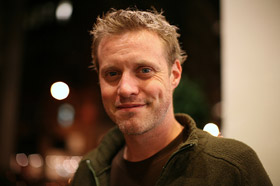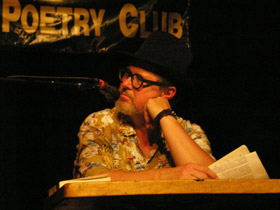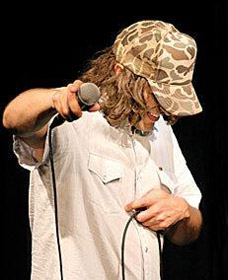Self-awareness is one of the big keys. If you read a lot of the psychology literature on creativity, one of the only real, solid correlations with being able to shift your creative output is the belief that you can change it. So for me — I think I picked this up in a Mihaly Csikszentmihalyi book — I’ve spent a long time just trying to figure out the kind of cycles that I go through, trying to pay attention to the different kinds of states that I find myself in.
There are times when I feel like I’m craving what I call unsolvable problems, and I have the kind of energy you need to move forward into uncharted territory and brave that side of things. And then there are other times when that seems like the most difficult chore in the world. So I’ve also gotten pretty comfortable knowing when I need to pick up solvable problems. Programming definitely fills that void for me. Also illustrating, doing little illustrations, things like that. This is a long-winded way of saying that I think I’ve got a range of techniques that feed into how I’m feeling at that particular moment.
Do you have any day-to-day habits you rely on?
I make something every day — I think that’s really the only habit that I’ve fallen into over the last few years. No matter what, I make something. This last year with The Show has been kind of convenient because it’s given me structure to play against. Before that, with the zefrank.com project, there was less structure and it was a lot more difficult. The Show narrowed the focus and made it a little bit easier because I know exactly what I have to work on each day. That aside, there’s this thing I try to do that I call “brain surfing.” Do you know the technique “morphological synthesis”?
I don’t.
There’s a really beautiful book by James L. Adams called Conceptual Blockbusting. It’s a book that was written in the ’70s on creativity. The idea is, you just start with a concept that’s immediate to you. I mean “immediate” in that you have some kind of direct emotional connection to it in that moment. And it can be as simple as a word. Maybe somebody pissed you off in line, or you’re worried that your toe is broken. And you just start with that and begin to associate things with it. It’s not really free association, so it’s not just anything that comes to mind. But you tell little stories to yourself that move you away from that initial concept.
So if it’s your toe being broken, you start thinking to yourself, well, what would happen if something else was broken and you tried to drive a car? Then you move away from that and you think about the worst car race ever. Now you’ve moved into a demolition derby. And you just sort of work in circles. At different points you stop and relate wherever you are back to the original concept. And just play. Sometimes I write these things down on paper, and sometimes I just sit there and do them in my head. But for me, it’s a nice little play zone where you can find very weird and silly things.



